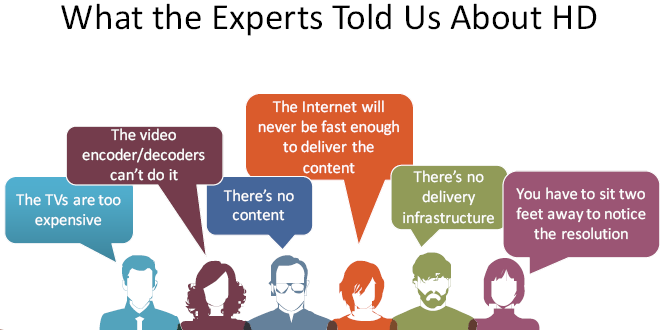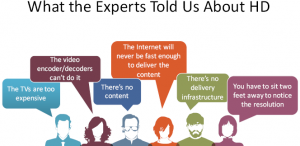
Marshall Goldberg is from Lattice and was with Silicon Image before it was acquired by Lattice. He tends to work on things that are two to three years out, he said. He explained the development of DVI, then HDMI, MHL and WirelessHD.
HDMI is used in 5 billion devices and virtually 100% of TVs, STBs, Blu-ray player and DVRs – and is also claimed to be the leading digital connection for monitors. The new HDMI spec was announced in January, with 8K support.
Lattice makes FPGAs and in the future they will be merged with HDMI and MHL dedicated interface chips to allow custom solutions to be developed.
Turning to 8K, Goldberg said that comments on this sound like those he heard about HD. All the discussions about HD said ‘too expensive’, ‘no content’, ‘the internet won’t be fast enough’, ‘there is no delivery infrastructure’ and ‘you have to sit too close’ etc.

By next year, new 49″ and above TVs will all basically be UltraHD. Goldberg pointed out that 8K is 16 times better than Blu-ray and the difference will be visible. Goldberg has an 8K TV in his lab and Lattice has demoed 8K at the last two CES shows, with LG and Samsung. 8K is another 4X increase on UHD so it will be challenging for interfaces. For 120Hz, you would need 10X HDMI 2 at 180Gbps, but the aim is to use the same cable and connector, so there is lots of work to be done to achieve this.
HDMI will not go away, Goldberg said. It might be displaced by optical fibre, which can achieve the bandwidth, but that is expensive. Copper can use CMOS chip technology to drive the interfaces, which is the core of the chip industry. However the volume business is cost driven and that will be a barrier for optical technologies.

